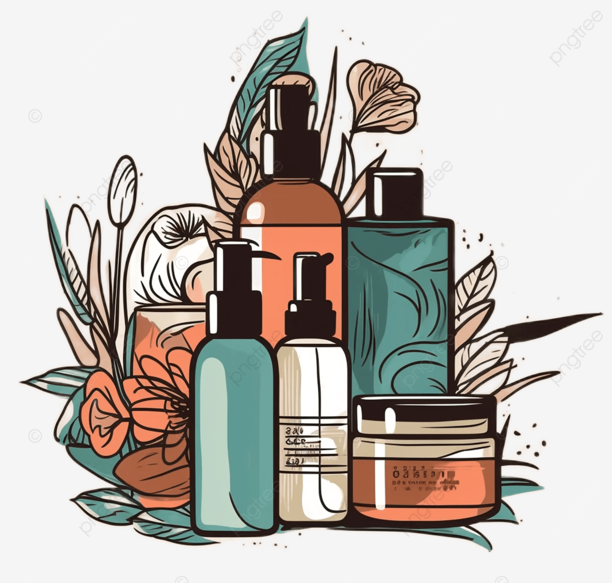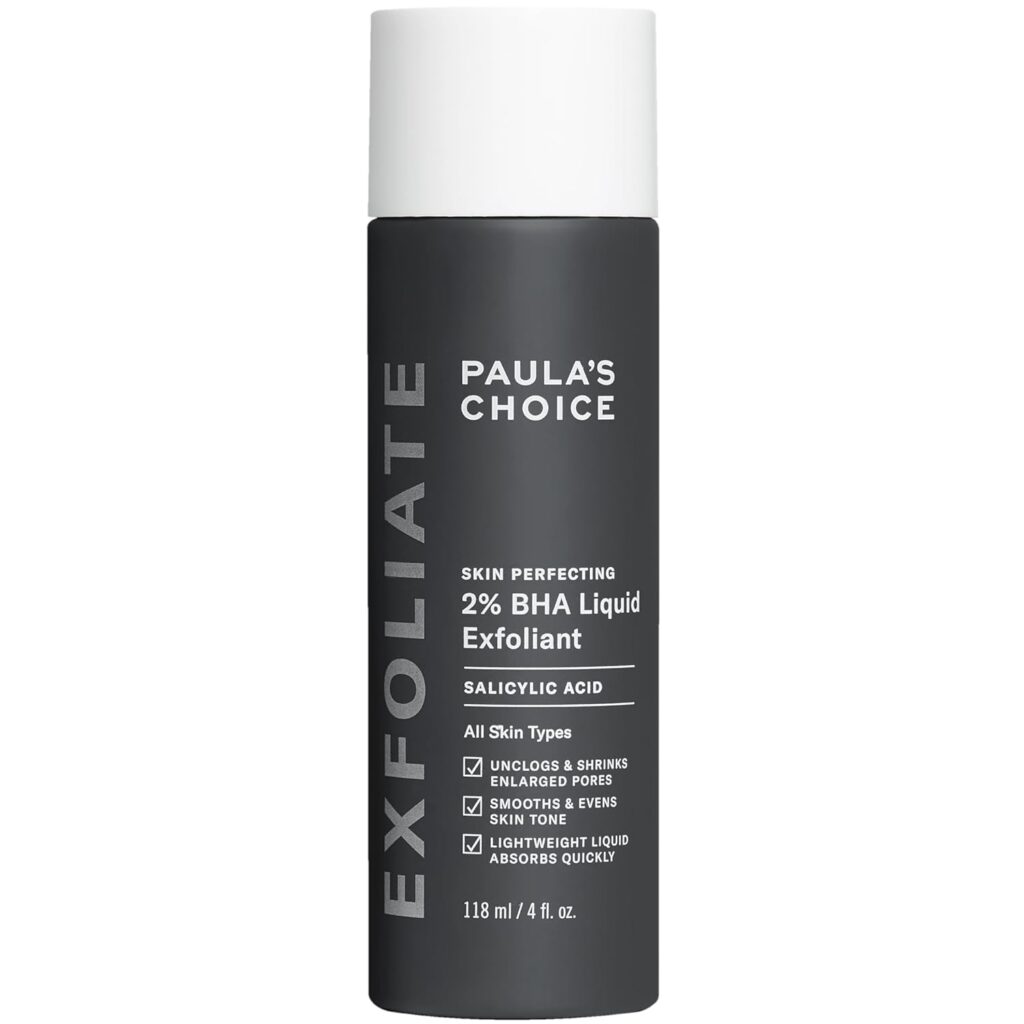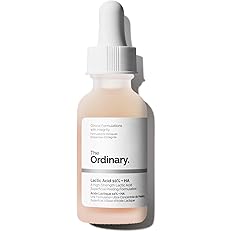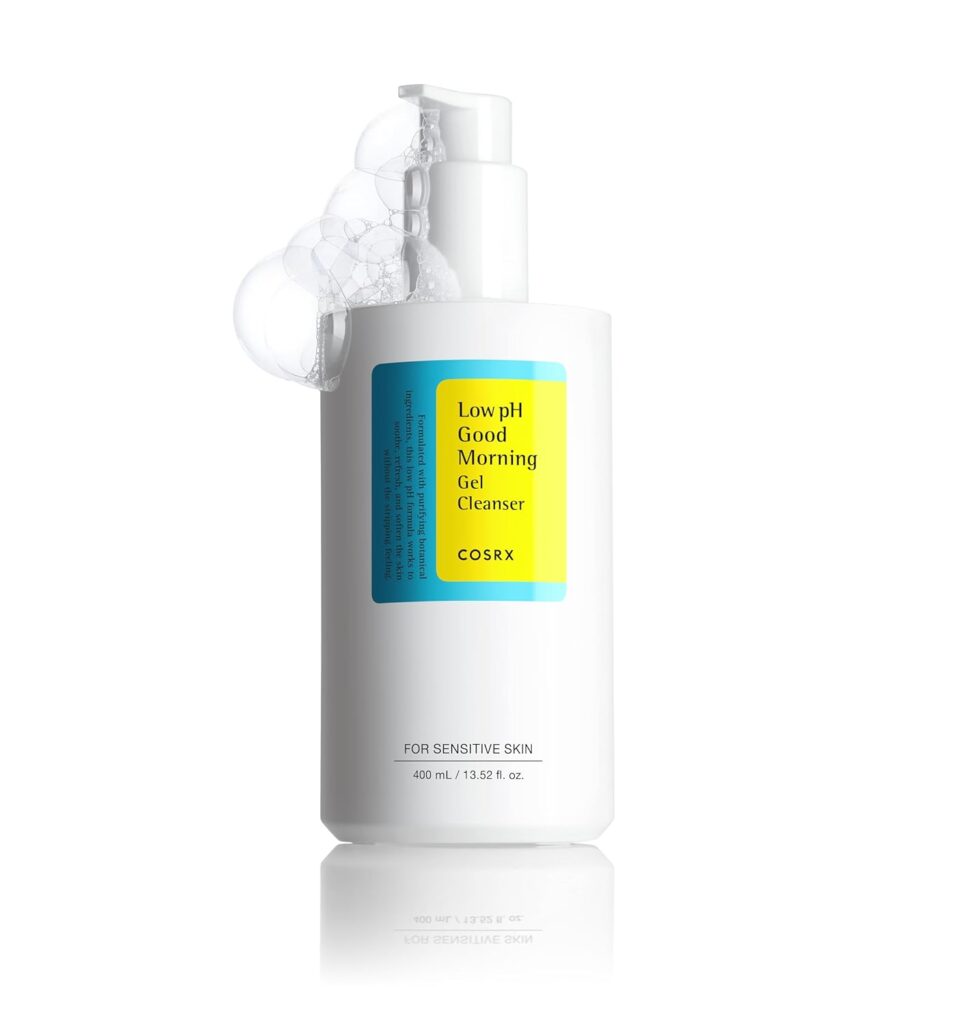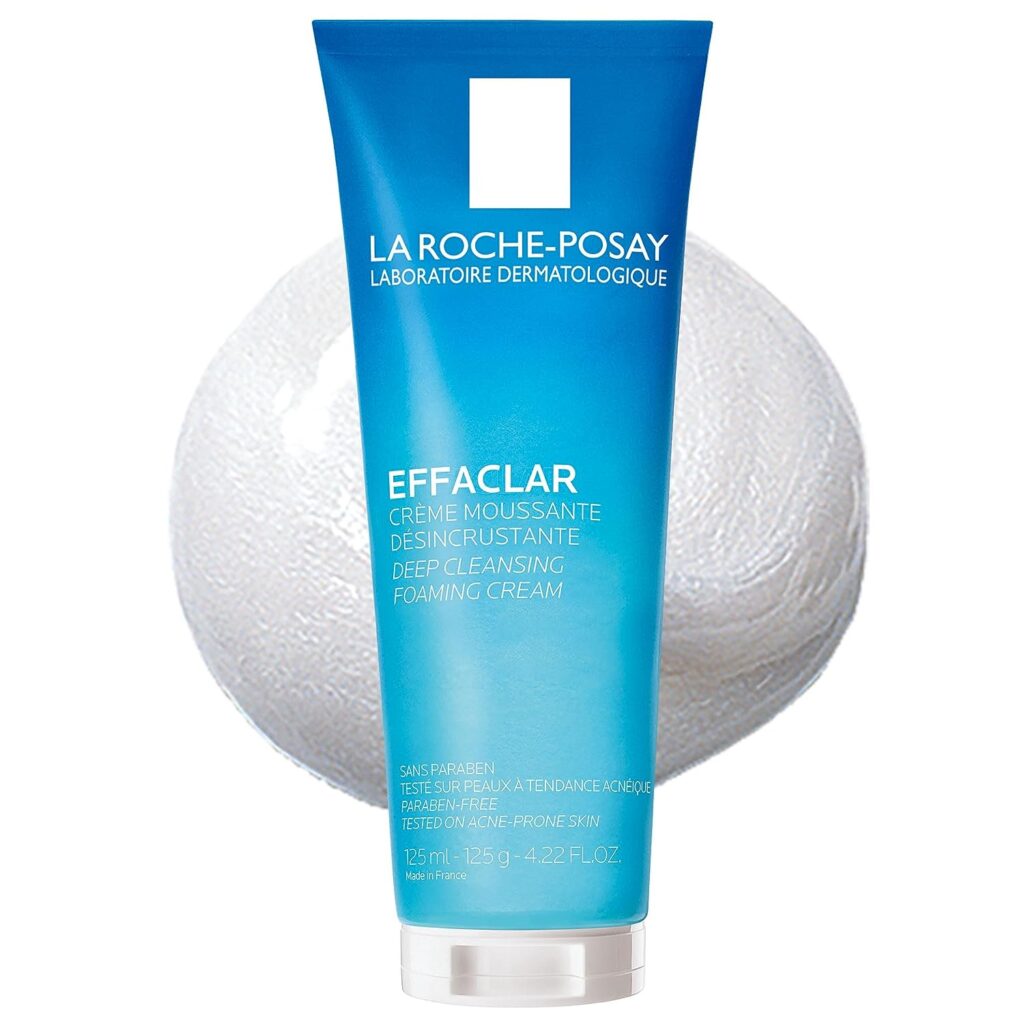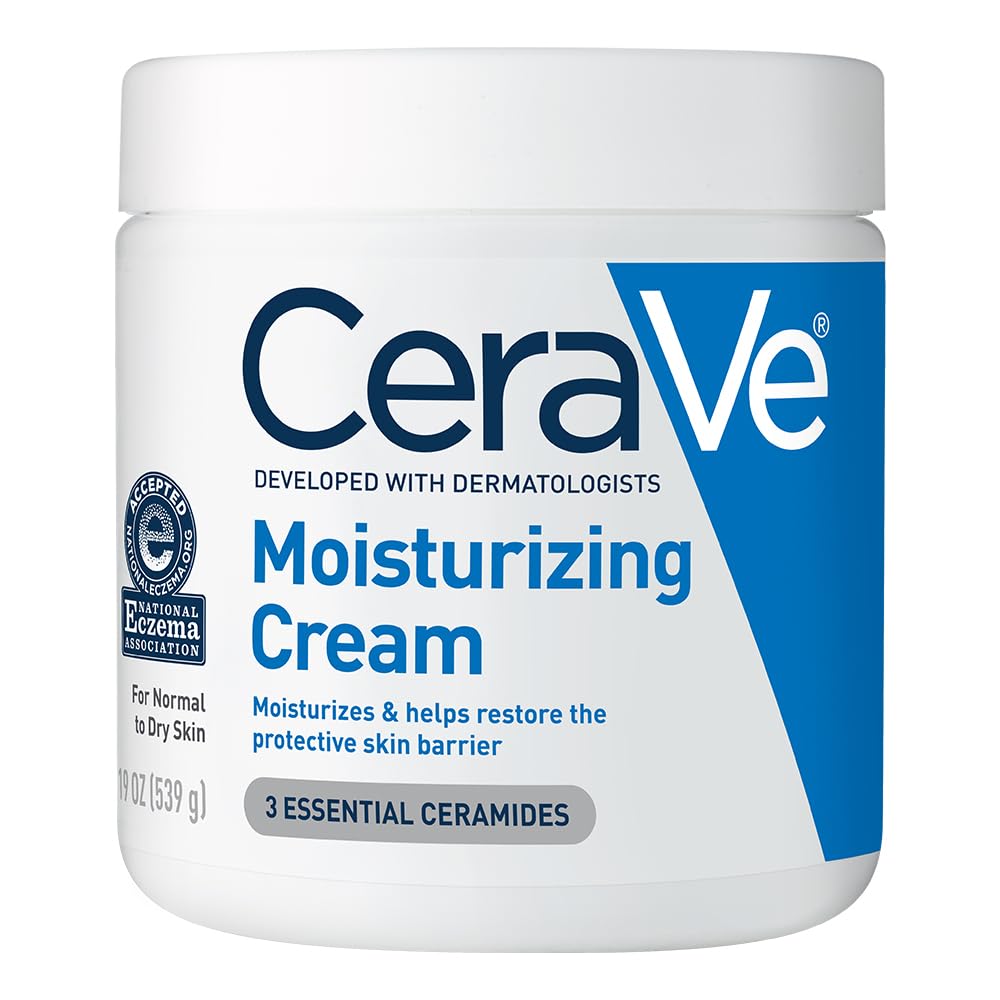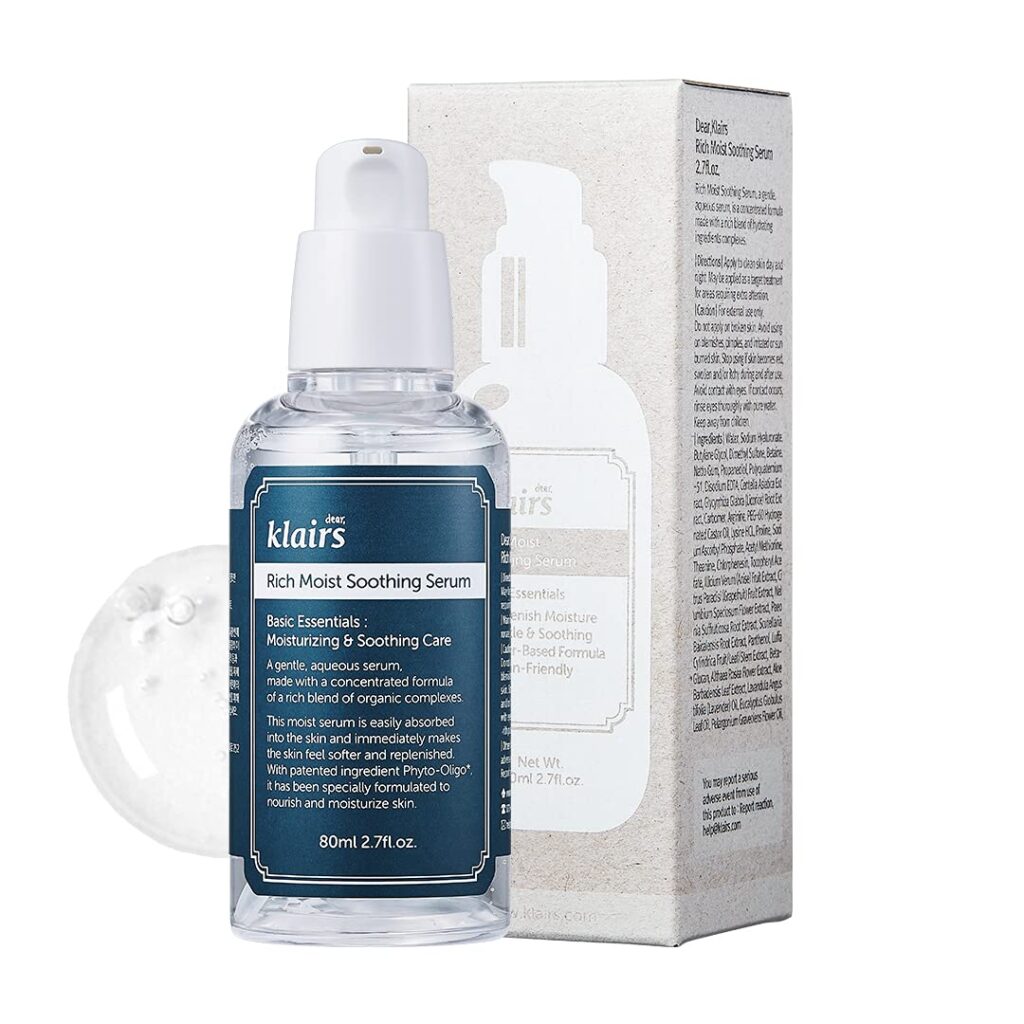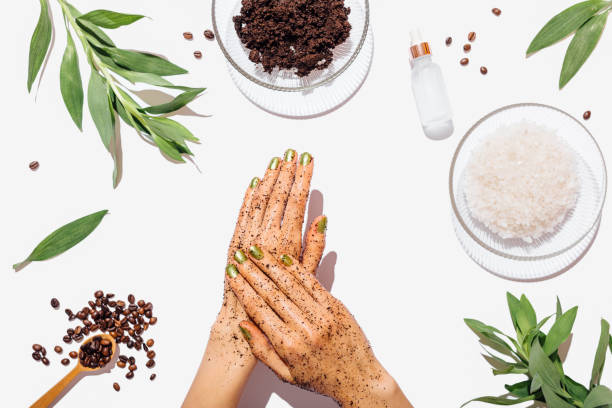
If you’ve ever found yourself standing in the skincare aisle, hesitating between scrubs, exfoliating serums, and brushes, you’re not alone. Exfoliating sensitive skin is a delicate dance. On one hand, you want the glowing, renewed skin that exfoliation promises, but on the other hand, you’re worried about irritating your already-sensitive face. With so many products to choose from and differing advice to consider, it can be overwhelming to figure out what works best for your sensitive skin. In this guide, we’re going to help you learn how to exfoliate properly, using a gentle approach to reveal radiant, healthy skin—without redness or discomfort.
Why Exfoliate Sensitive Skin?
Sensitive skin tends to be reactive, easily showing signs of irritation or inflammation. So why would you even want to exfoliate at all? The truth is even sensitive skin can benefit greatly from regular exfoliation. Dead skin cells accumulate over time, dulling your complexion and clogging your pores. With proper exfoliation, you can help your skin regenerate more effectively, leaving it smoother, more even toned, and better able to absorb the rest of your skincare products. The key is to understand how to exfoliate in a way that won’t irritate your sensitive skin.
The Golden Rules of Exfoliating Sensitive Skin
1. Avoid Harsh Scrubs
The first step in exfoliating sensitive skin is to avoid harsh scrubs that can tear at the skin and lead to inflammation. Physical exfoliators—those that contain gritty particles—can sometimes cause micro-tears in the skin, making it even more sensitive. Instead, look for physical exfoliants that contain very fine particles or skip them entirely.
For a gentler approach, try Paula’s Choice Skin Perfecting 2% BHA Liquid Exfoliant. This is an incredibly popular product on Amazon, with over 70,000 reviews and an average rating above 4 stars. It uses salicylic acid, a chemical exfoliant that helps remove dead skin without scrubbing. Best of all, it is known for being mild enough for those with sensitive skin, which means you can enjoy the benefits of exfoliation without the risk of irritation.
2. Opt for Chemical Exfoliants
Chemical exfoliants can often be a much better choice for sensitive skin, as they don’t involve any physical scrubbing. Alpha Hydroxy Acids (AHAs) like lactic acid and Beta Hydroxy Acids (BHAs) like salicylic acid work by gently dissolving dead skin cells, revealing smoother and brighter skin underneath. The key with chemical exfoliants is to use a low concentration—especially at first—so that your skin has time to adjust.
Another excellent product that works well for sensitive skin is The Ordinary Lactic Acid 5% + HA. This exfoliator uses lactic acid, which is known to be one of the gentler AHAs, making it suitable for those who are prone to redness or irritation. Additionally, it contains hyaluronic acid to help hydrate and soothe the skin during the exfoliation process.
3. Start Slow
Even the best exfoliators for sensitive skin can cause problems if overused. The golden rule of exfoliating sensitive skin is to start slow. You might be tempted to exfoliate daily, but for sensitive skin, less is definitely more. In the beginning, exfoliating just once per week is sufficient. This will give your skin time to get used to the new treatment without becoming overwhelmed. Once you determine that your skin is handling it well, you can increase to twice per week if needed.
4. Patch Testing is Essential
When you’re trying a new exfoliant for the first time, always do a patch test. Apply a small amount of the product to a less visible area, such as the side of your neck or behind your ear, and wait 24 hours to ensure that your skin doesn’t have a negative reaction. This step is especially crucial for sensitive skin, as it helps you avoid any potential irritation before you apply the product to your entire face.
5. Incorporate Soothing Ingredients
Sensitive skin tends to respond best when the exfoliation process is paired with soothing ingredients that help calm the skin. Look for products that contain ingredients like aloe vera, chamomile, oatmeal, or allantoin, all of which help reduce redness and calm irritation.
One product that balances exfoliation with calming benefits is CosRx Low pH Good Morning Gel Cleanser. While this is technically a cleanser, it contains gentle BHAs that provide a light exfoliation while also containing soothing botanical ingredients to balance out the effects.
Choosing the Right Products for Your Sensitive Skin
When it comes to sensitive skin, less is more. Choose products with minimal ingredient lists and avoid those that contain artificial fragrances or alcohol. Below are some products that have been rated highly on Amazon and work particularly well for those with sensitive skin:
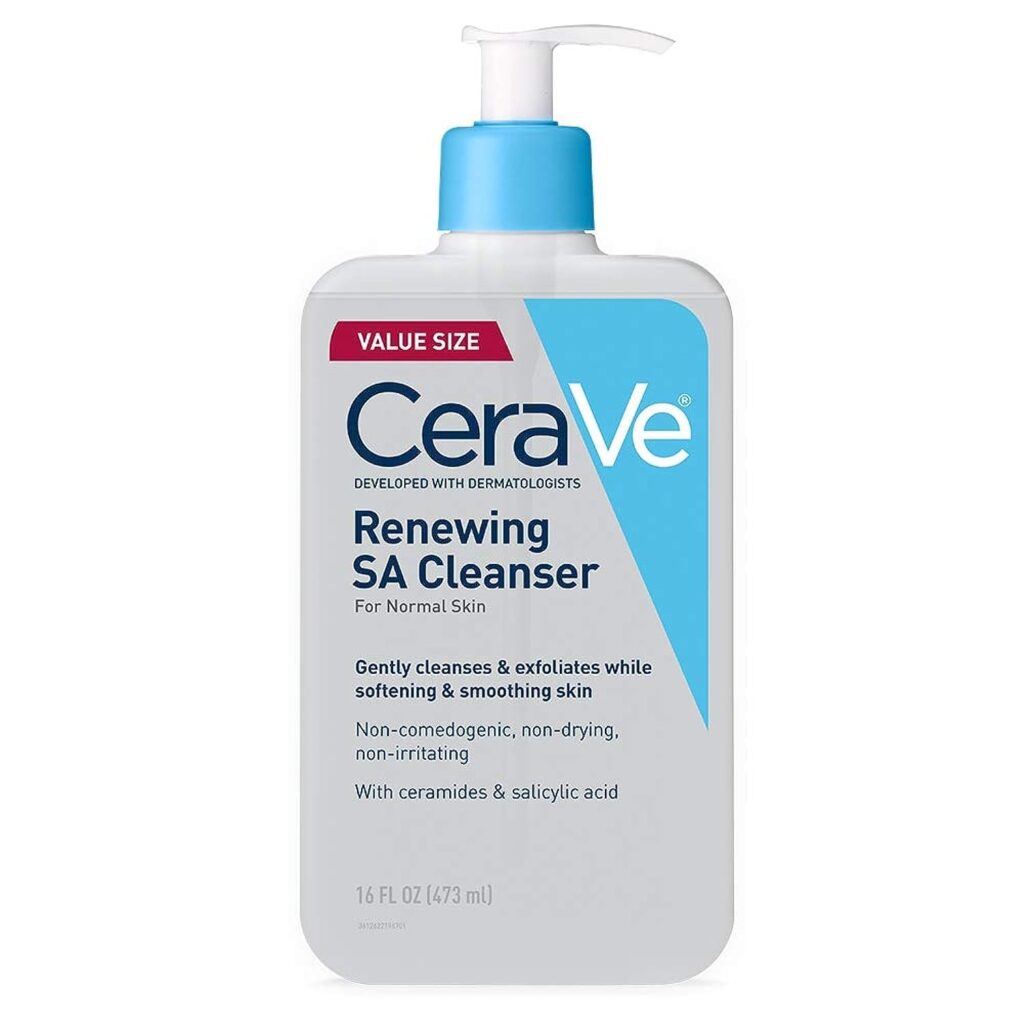
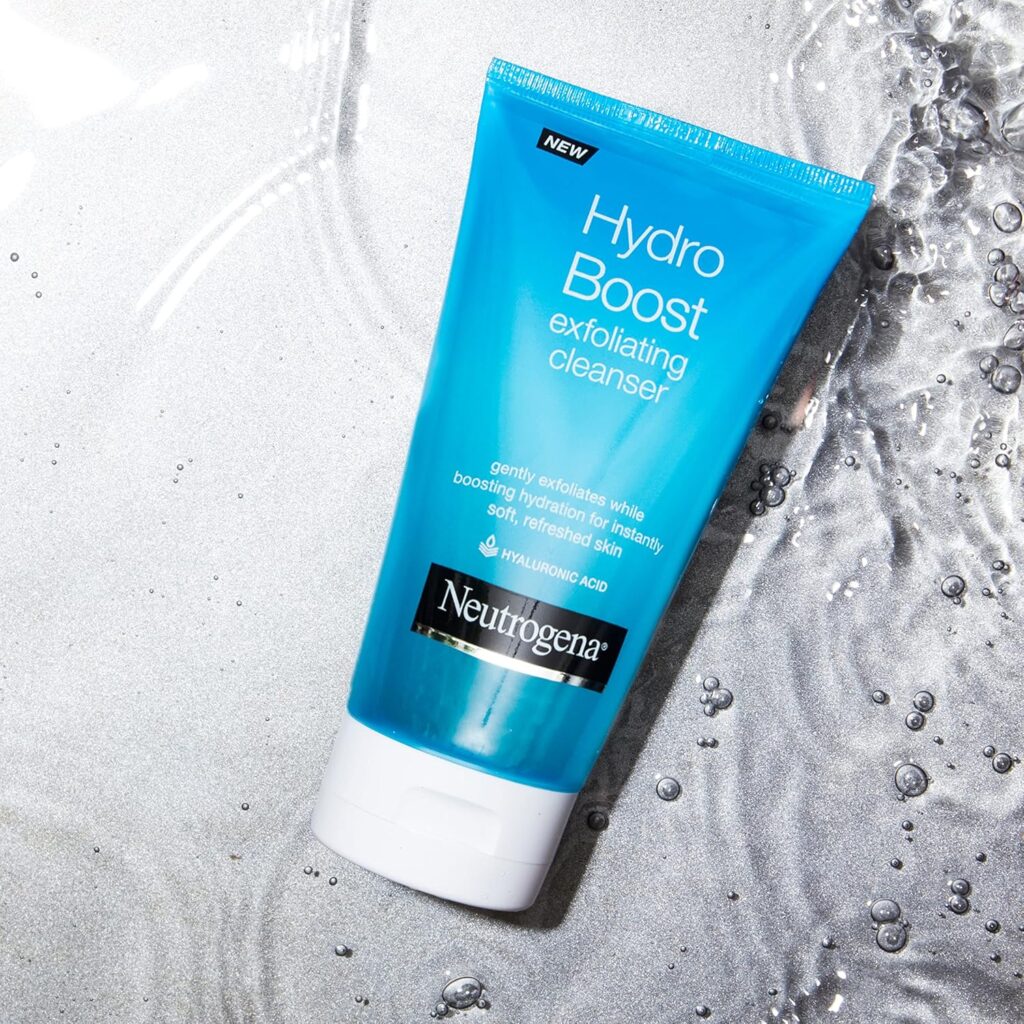
- La Roche-Posay Ultra-Fine Scrub for Sensitive Skin: This physical exfoliant has ultra-fine particles and a soothing formula, making it suitable for sensitive skin. It has received many positive reviews for being effective while remaining non-irritating.
- CeraVe Renewing SA Cleanser: Containing salicylic acid, this cleanser helps gently exfoliate the skin while including ceramides to support the skin barrier. It’s also fragrance-free, which is an added bonus for sensitive skin types.
- Neutrogena Hydro Boost Exfoliating Cleanser: This product combines the power of chemical exfoliation with hyaluronic acid to hydrate the skin, ensuring that it doesn’t become overly dry or irritated after exfoliation.
How to Use Exfoliants in Your Routine
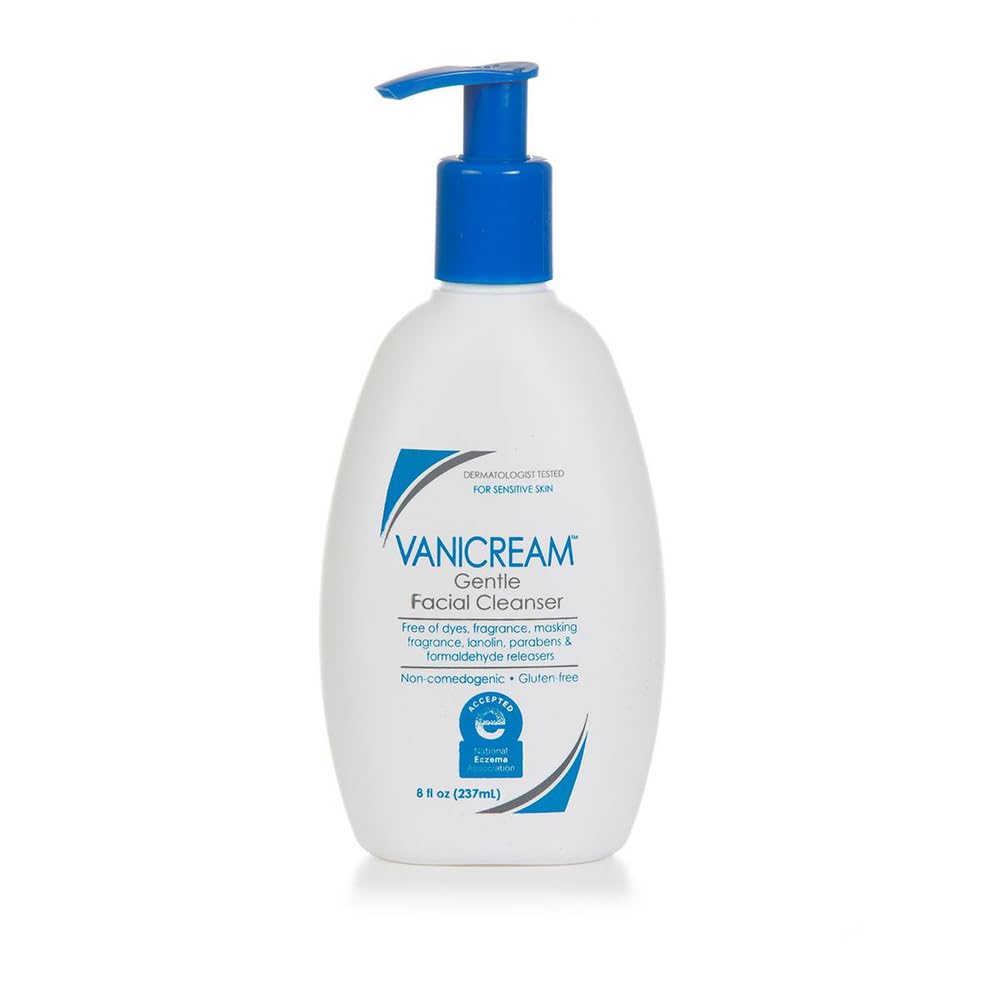
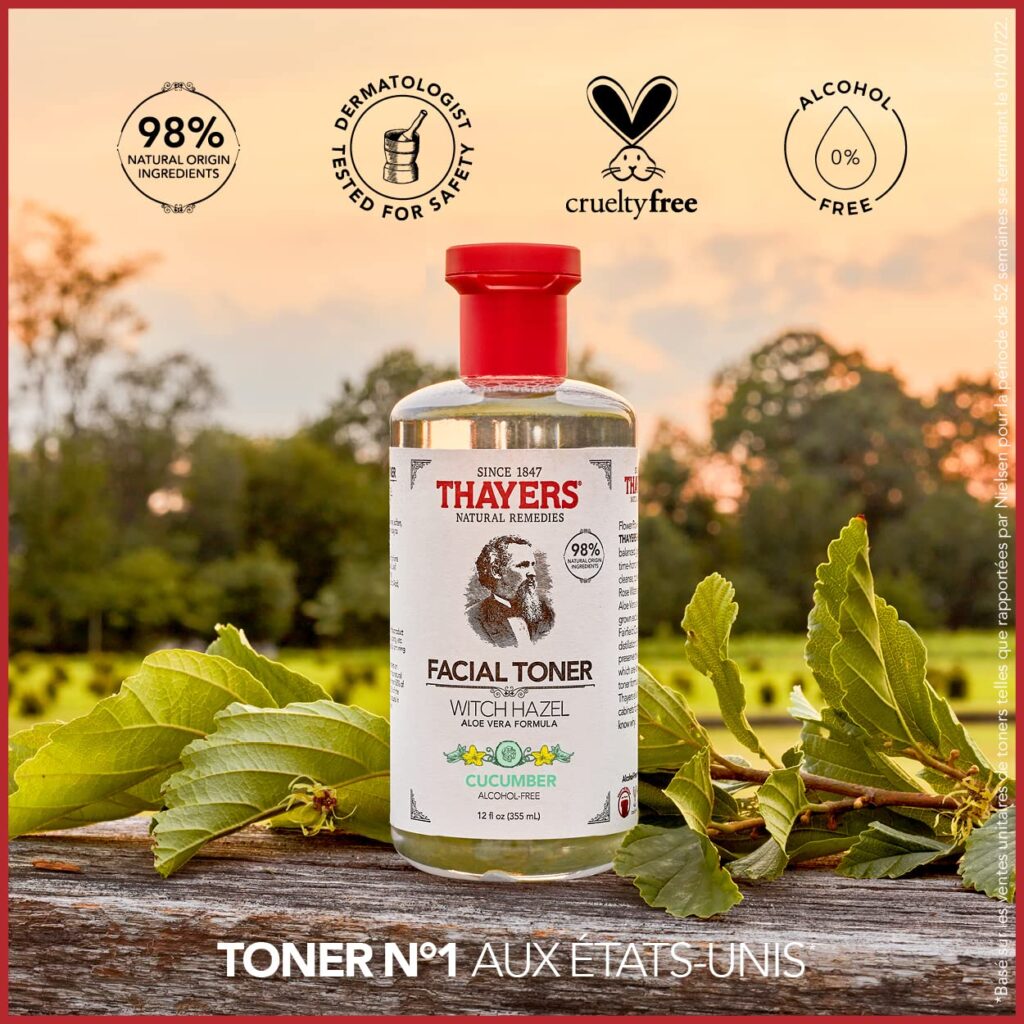
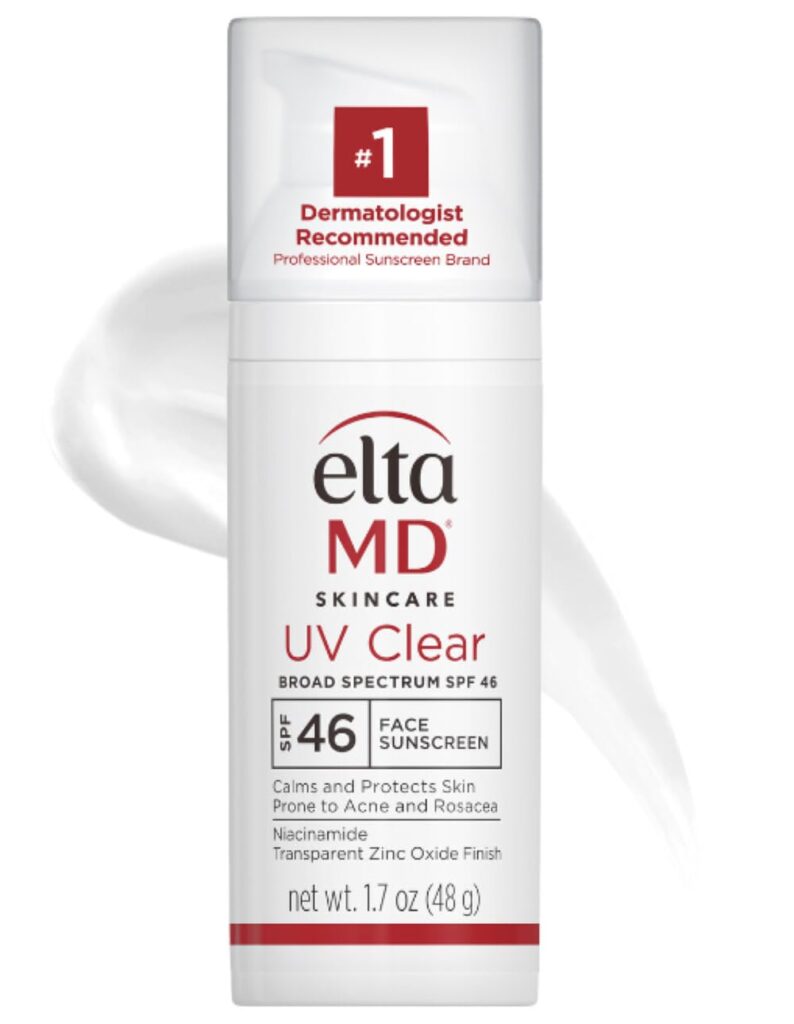
- Cleanse: Start with a gentle, hydrating cleanser like Vanicream Gentle Facial Cleanser, which is suitable for sensitive skin and helps maintain your skin’s natural moisture balance.
- Exfoliate: Use your chosen exfoliant, whether it be chemical or physical. Remember to follow the product instructions and not to overuse it.
- Tone (Optional): If you use a toner, make sure it’s alcohol-free. Consider a soothing toner like Thayers Witch Hazel Alcohol-Free Toner, which has aloe vera to calm the skin.
- Moisturize: Always moisturize after exfoliating to lock in hydration. A product like CeraVe Moisturizing Cream is ideal, as it contains ceramides and hyaluronic acid to support the skin barrier and hydrate without causing irritation.
- Protect: Never forget to apply sunscreen in the morning after exfoliating. Freshly exfoliated skin is more susceptible to sun damage. A mineral sunscreen like EltaMD UV Clear Broad-Spectrum SPF 46 is well-suited for sensitive skin.
If you’re incorporating an exfoliant into your routine, make sure it fits with the other products you’re using. Sensitive skin requires a delicate balance, so avoid using too many active ingredients at once. Here’s a simple guide on how to work exfoliation into your routine:
Avoiding Common Mistakes
When it comes to exfoliating sensitive skin, there are some common mistakes you’ll want to avoid to keep your skin looking and feeling its best.
Over-Exfoliating
One of the biggest mistakes people make is exfoliating too frequently. Your skin needs time to regenerate between exfoliation sessions, especially if it’s sensitive. Stick to a schedule of once or twice a week to prevent damaging your skin barrier.
Using Too Many Actives
It can be tempting to mix different exfoliating products in the hopes of maximizing your results. However, using multiple exfoliating products or combining exfoliants with other active ingredients like retinol or vitamin C can lead to irritation and redness. It’s best to keep things simple and avoid layering too many potent products.
Skipping Sun Protection
Exfoliating makes your skin more sensitive to the sun, so it’s vital to use sunscreen every single day. Sunscreen not only prevents sunburn but also reduces the risk of hyperpigmentation and premature aging—common concerns for those with sensitive skin. Make sure to reapply sunscreen throughout the day, especially if you’ve been outdoors for an extended period.
DIY Exfoliation for Sensitive Skin
If you’re a fan of DIY skincare, there are some natural exfoliants you can use at home that are gentle enough for sensitive skin. One excellent option is oatmeal, which has soothing properties and provides a very mild exfoliation without irritating your skin.
To create your own oatmeal exfoliator:
- Grind plain oatmeal in a blender or food processor until it’s a fine powder.
- Mix it with a few tablespoons of warm water or yogurt to create a paste.
- Apply it to your skin in gentle, circular motions, and leave it on for a few minutes.
- Rinse thoroughly with lukewarm water.
Another DIY option is to use honey mixed with a bit of baking soda. Honey is a natural humectant, meaning it draws moisture into the skin, while baking soda provides gentle exfoliation. Be sure to use minimal pressure when applying this mixture, as sensitive skin can easily become inflamed with too much friction.
Listen to Your Skin
The most important thing you can do when exfoliating sensitive skin is to listen to what your skin is telling you. If it becomes red, inflamed, or starts to sting, you may be exfoliating too often or using a product that’s too strong. Cut back or switch to something gentler until you find what works for you. Every person’s skin is unique, and finding the perfect routine for exfoliating sensitive skin often requires a bit of trial and error.
Post-Exfoliation Care
After exfoliating, your skin is more vulnerable, so it’s crucial to give it some extra love. Look for soothing, nourishing ingredients like niacinamide, aloe vera, or centella asiatica, which can help calm your skin and reduce redness. A good choice is the Klairs Rich Moist Soothing Serum, which is specifically formulated for sensitive skin and works wonders after exfoliation to help restore your skin’s balance.
Conclusion
Exfoliating sensitive skin doesn’t have to be a daunting task. By choosing the right products, starting slow, and listening to your skin, you can achieve that healthy, radiant glow without causing irritation. Whether you choose a gentle chemical exfoliant, a finely milled physical exfoliant, or a natural DIY scrub, make sure you’re taking the time to care for your sensitive skin in the way it deserves.
If you’re looking to invest in an exfoliating product, remember to consider the options that have been tried and loved by many others with sensitive skin. Products like Paula’s Choice Skin Perfecting 2% BHA Liquid Exfoliant and The Ordinary Lactic Acid 5% + HA are popular choices that are worth exploring.
Click on any product to see the exact product we are talking about and getting it for a great price!
Above all, exfoliation should feel like an act of self-care, not a struggle. Be gentle, be patient, and give your skin the attention it needs. In return, it will reward you with the glow and smoothness that comes from a well-balanced skincare routine.
